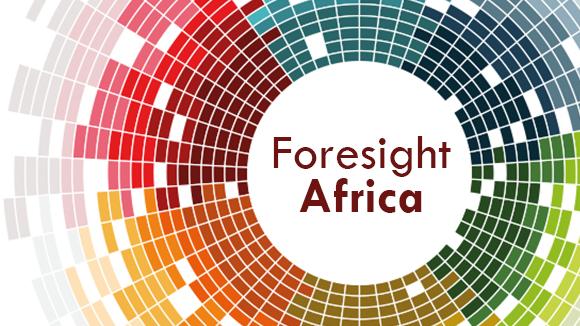Below is a Viewpoint from Chapter 2 of the Foresight Africa 2021 report, which explores top priorities for the region in the coming year. This year’s issue focuses on strategies for Africa to confront the twin health and economic crises created by the COVID-19 pandemic and emerge stronger than ever. Read the full chapter on support for public health.
 At the onset of the COVID-19 pandemic, African countries implemented social distancing measures that have helped reduce the spread of the virus. At the same time, the pandemic and many of the associated policies to protect people’s health pulled many households on the continent into poverty and the sub-Saharan region into a recession. These complex challenges now affect the ability of African countries to finance vaccine procurement and delivery, which are necessary to end the pandemic.
At the onset of the COVID-19 pandemic, African countries implemented social distancing measures that have helped reduce the spread of the virus. At the same time, the pandemic and many of the associated policies to protect people’s health pulled many households on the continent into poverty and the sub-Saharan region into a recession. These complex challenges now affect the ability of African countries to finance vaccine procurement and delivery, which are necessary to end the pandemic.
While a few wealthy countries have secured for themselves more than half of the world’s promised doses of the leading COVID-19 vaccine candidates, most African countries are relying on the COVAX facility—a co-financing vaccine procurement mechanism set up to ensure equitable access—to obtain the vaccines.
While, so far, Gavi (the Vaccine Alliance) has secured some of these candidates for low-income countries and promised vaccines for 20 percent of those countries’ populations, this amount will not be nearly enough, since vaccination of more than 50 percent of a population is required to attain a level of community immunity. In addition, costs go beyond just the dosage, and these countries will likely have to share part of the costs of the vaccine and its delivery. Notably, while the cost of vaccines such as Pfizer’s and Moderna’s ranges from about $15 to $25 per dose, AstraZeneca plans to sell theirs for as little as $2.50 to ensure it is affordable to residents of poorer countries.
For equitable access to COVID-19 vaccines in Africa, a good strategy will actually be to improve on approaches that have already worked on the continent.
Complicating this task are challenges in the continent with cold-chain sufficiency and “last mile” delivery, especially in rural areas. The primary health care center, which is the last level of the cold chain system in most African countries, usually lacks personnel and technical capacity, and many are located in rural, hard-to-access, or remote areas that lack the infrastructure necessary for vaccine delivery.
Indeed, some of the successful COVID-19 vaccines will require ultra-cold temperatures for storage, but most African countries have never deployed vaccines with such needs and don’t have the infrastructure to support that ultra-cold storage. Other complex challenges, such as vaccine hesitancy and armed conflicts in several countries, can hinder widespread COVID-19 immunization on the continent too.
About 22 African countries can be said to have a working cold-chain system for routine vaccines stored at the regular 2°C to 8°C temperature. They have achieved the Global Vaccine Action Plan target of 90 percent or greater coverage of routine vaccines. However, most countries with larger populations or economies on the continent, such as Angola, the Democratic Republic of the Congo (DRC), Ethiopia, Nigeria, South Africa, and Tanzania, have yet to achieve that 90 percent coverage goal. Still, in response to past disease outbreaks and with support from the World Health Organization and Gavi, low-vaccine coverage countries like Nigeria and the DRC have implemented successful vaccination strategies. Just recently, Nigeria was able to eradicate wild polio, and Ebola outbreaks were stopped in the DRC with a vaccine that requires ultra-cold storage.
African governments should already be organizing effective vaccine awareness campaigns and community engagement to combat vaccine misinformation and hesitancy.
So, for equitable access to COVID-19 vaccines in Africa, a good strategy will actually be to improve on approaches that have already worked on the continent. At the same time, wealthy countries and donor organizations should continue to support African countries with vaccine donations and “last mile” delivery technologies such as the Artek—a high-tech, insulated reusable container that can keep a vaccine at ultra-cold temperatures for up to a week without electricity and be moved around easily in difficult terrains—used for Ebola vaccination in the DRC. In the northeast of Nigeria, where the Boko Haram insurgency is active, the use of security personnel to support vaccine deployment led to an increase in the number of communities and households accessed by polio vaccination teams.
At the same time, African governments should already be organizing effective vaccine awareness campaigns and community engagement to combat vaccine misinformation and hesitancy. They should also commit sufficient resources, such as deploying security personnel to accompany immunization workers to security-compromised areas, to ensure vaccine access in all areas as well.
The Brookings Institution is committed to quality, independence, and impact.
We are supported by a diverse array of funders. In line with our values and policies, each Brookings publication represents the sole views of its author(s).





Commentary
Navigating the complexities around a COVID vaccine in Africa
January 25, 2021